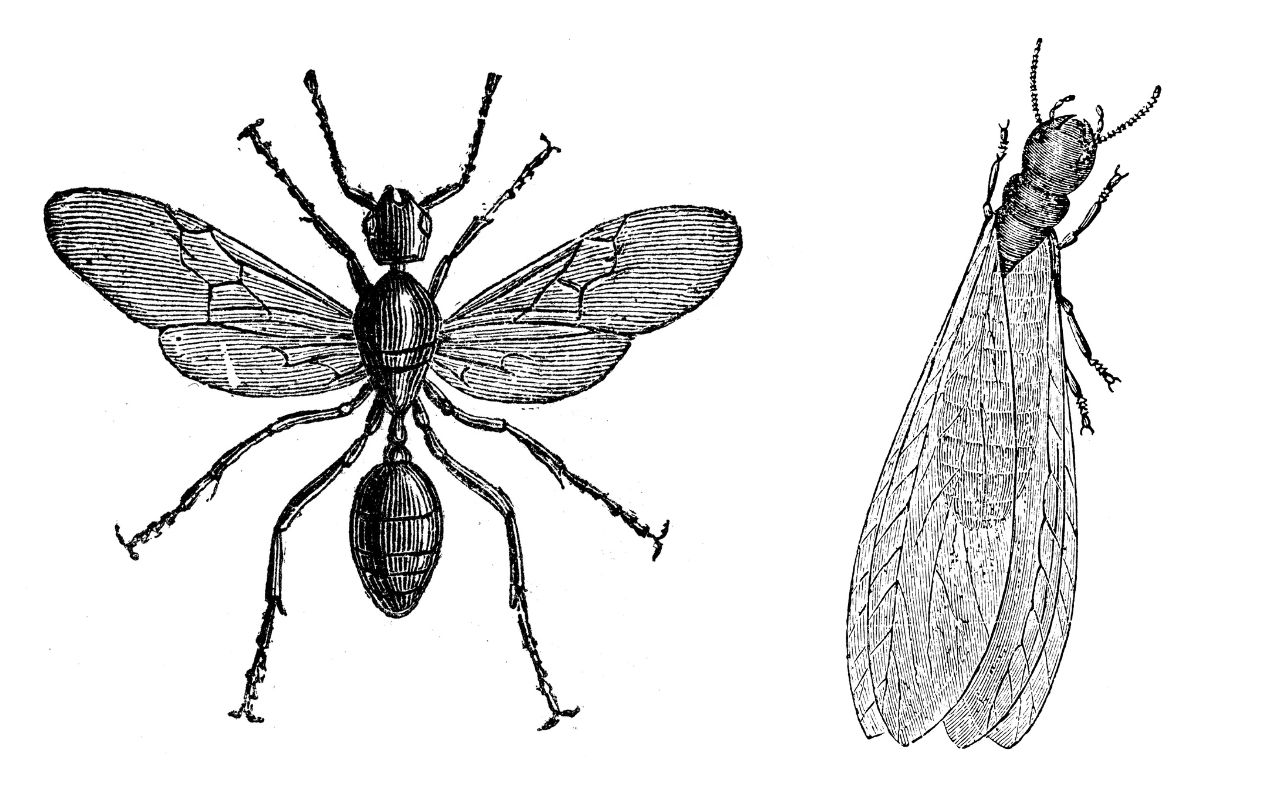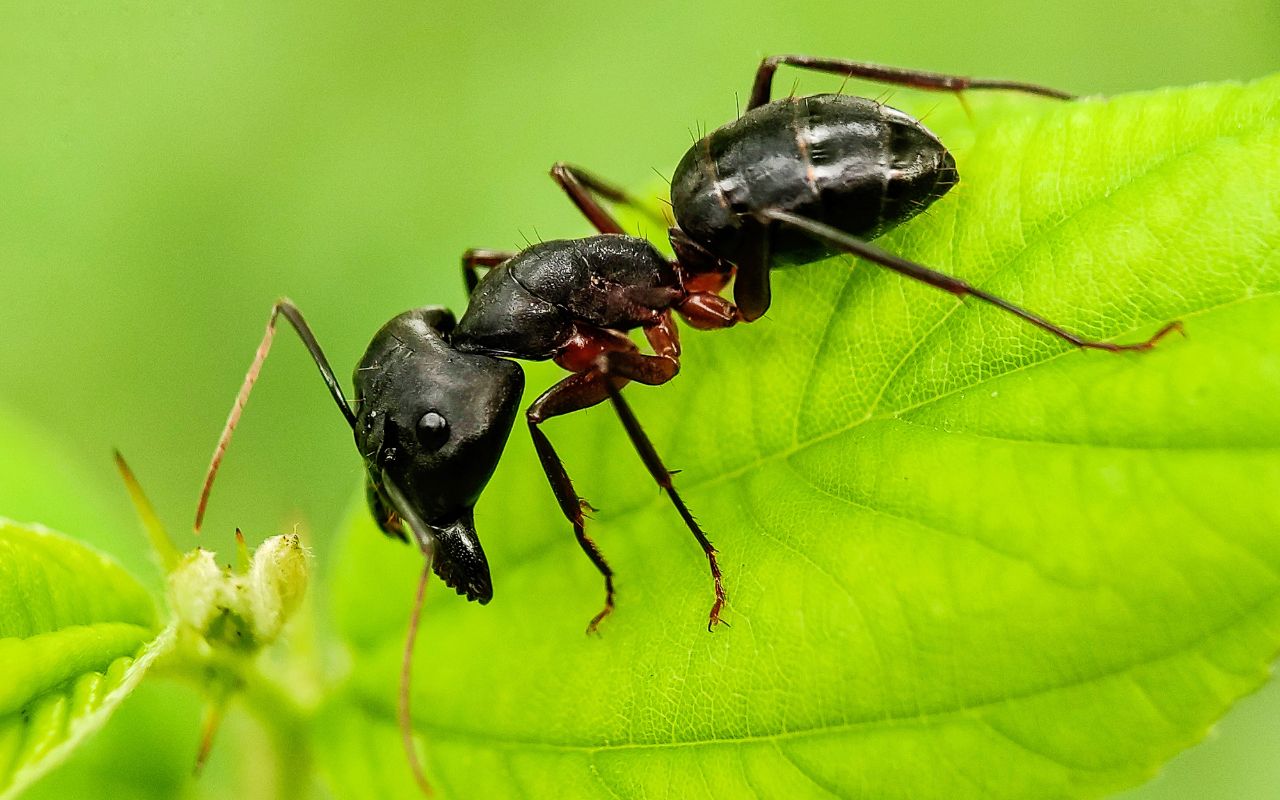What Do Termites Look Like?
Termites are secretive insects and spend most of their time out of sight – and this means that many people have never seen one! However, being able to identify early signs of a termite infestation is important as these destructive critters can create lots of damage in just a few months!
In this article you’ll learn how to identify termites throughout their life stages, learn what signs of termites to look out for, and also how to distinguish them from carpenter ants and swarms of flying ants.
If you suspect you may have termites it is important to get a termite inspection. A pest control professional will be able to quickly identify termite infestations and prevent them from causing more structural damage.
Termite Identification Throughout Their Life Cycle
When thinking about insect life cycles we often think in terms of butterflies or cicadas. An adult lays an egg, the egg hatches into a larvae, the larvae forms a pupae, the pupae emerges as an adult.
However, termites colonies are more complex and within a single colony there will be several different forms or castes of termites. Each of these different types performs a specialized role in the colony and they often look radically different from one another.

Worker Termites
Worker termites are typically soft-bodied and pale, almost translucent in color. They are wingless, with a rounded head and relatively uniform body segments.
At a glance they may appear to be white ants as they share the same basic body shape and size.

Soldier Termites
Soldier termites are characterized by their larger, darker head compared to workers, and are equipped with strong mandibles used for defense. They are usually slightly larger than workers and have a more robust appearance with a light brown body. Due to their darker coloration and larger size, they tend to stand out when defending their colony.

Neotenic Termites
Neotenic termites are secondary or tertiary reproductive termites that can replace the king or queen if needed. They resemble workers but are slightly larger and can develop reproductive capabilities. They have a more developed thorax and, in some species, may have partially developed wings.

Flying Termites (Swarmers)
Swarmers, or flying termites, are reproductive termites which have emerged from their birth colony and are in search of a suitable location to start a new colony. They are characterized by dark bodies and long, translucent wings that lie flat over their abdomen when not in use.
They are the most noticeable when they swarm – hence the name – although it only takes a single mated pair to establish a new colony.

Alates (Queen and King)
The termite queen and king are the largest termites in the colony.
The queen has an enormously extended abdomen for egg laying, significantly larger than any other caste, and can be several times the size of other termites.
The king is similar in size and appearance to swarmers but is now wingless and remains in the colony to continue mating throughout his life.
Most Visible Signs of Termite Activity
While it is understandable to want to be able to identify termites by looking at a particular bug – the reality is that termites are very secretive creatures and are rarely seen. Instead, you are more likely to see other signs that indicate their presence.
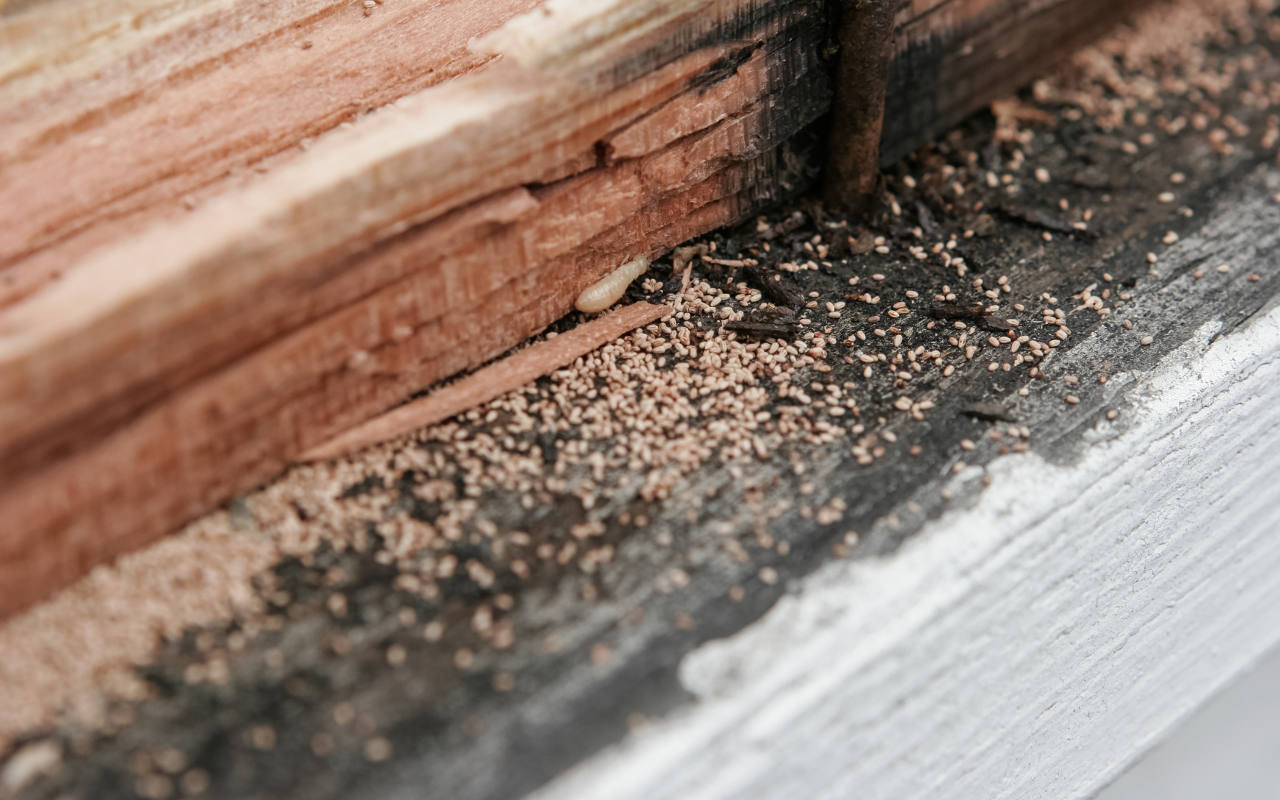
Frass (Termite Droppings)
Frass is the term used for termite droppings and usually indicates the presence of drywood termites. Drywood termites are less damaging than subterranean termites as their colonies are much smaller.
Appearance: Frass typically looks like a pile of fine, dark-brown or wood-colored pellets, resembling sawdust or sand.

Discolored or Drooping Drywall
Termites can cause damage to drywall by consuming the cellulose-containing paper backing, ultimately affecting the integrity of the drywall itself.
Appearance: Infested drywall may appear discolored, with a faint yellow or brown tint, and may begin to droop or sag.
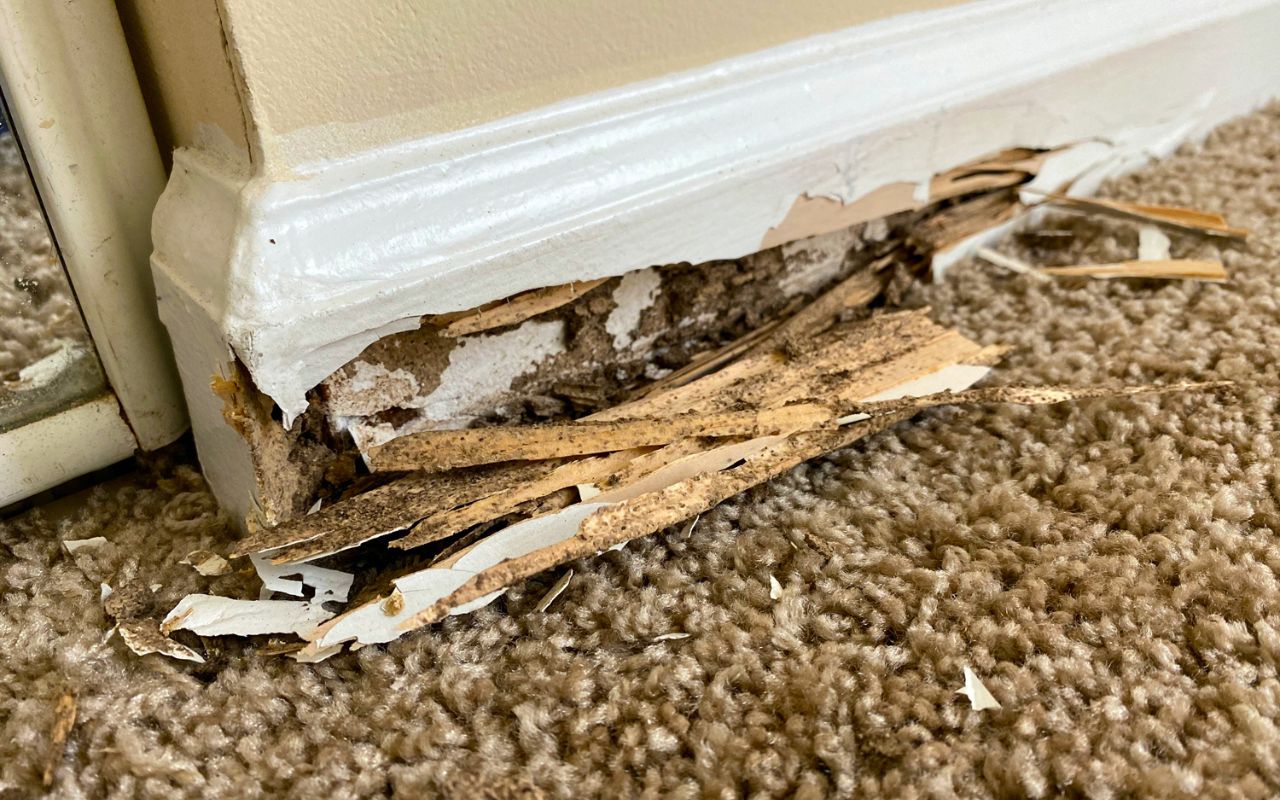
Hollowed Wood
Hollowed wood is a common sign of termite activity, where the inside of the wood is consumed, leaving behind just a thin layer of timber and paint.
Appearance: The surface of hollowed wood may appear normal until tapped, at which point it sounds hollow and may break or deform easily under slight pressure.
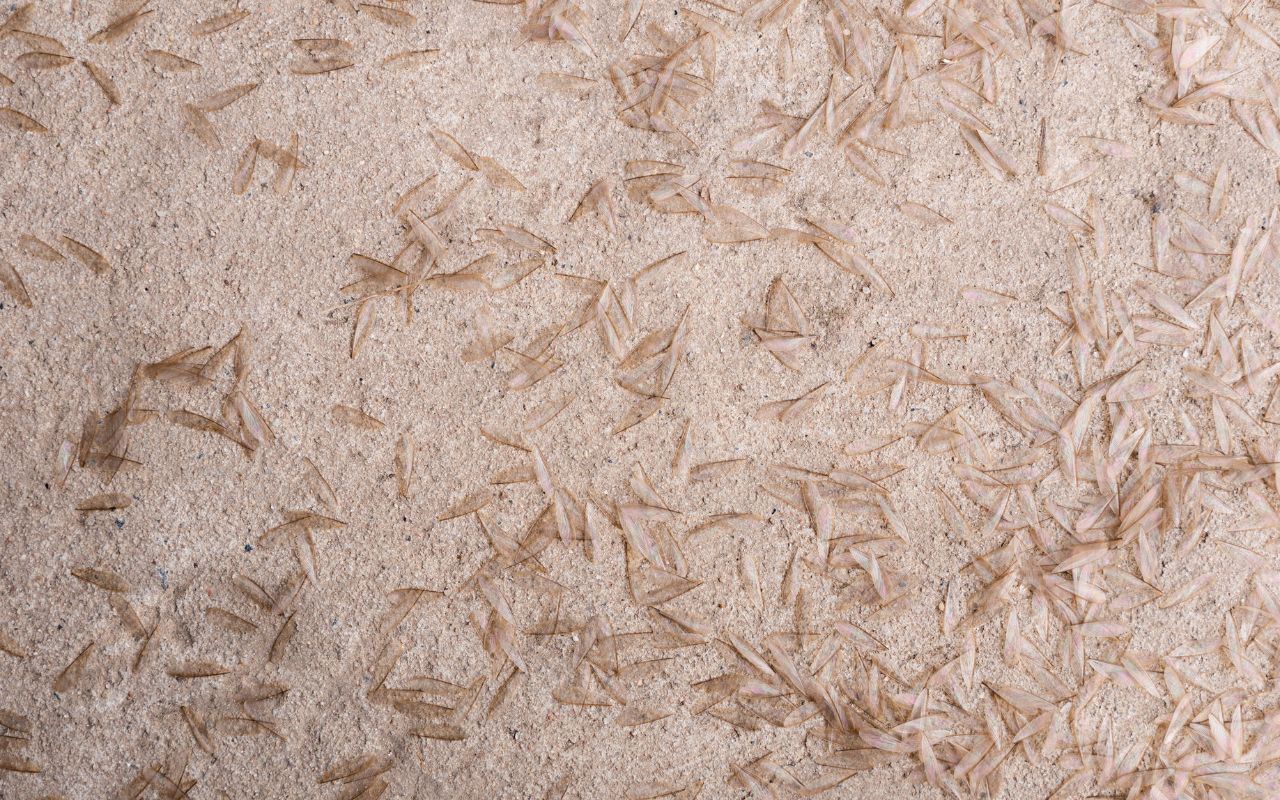
Discarded Wings
After swarming termites land, they shed their wings as they will no longer need them. This typically indicates that the termites are attempting to start a new colony in the area.
Appearance: Discarded termite wings are often found near windowsills, doors, and other entry points after termite swarmers have shed them. These thin, translucent wings will be a uniform size and shape and often resemble tiny fish scales.

Mud Tubes
Mud tubes are shelter tunnels made by termites, typically subterranean termites like the Eastern Subterranean Termites found in South Carolina, to protect them from predators and maintain the humid environment they require to live while they travel to and from their food sources.
Appearance: Mud tubes are usually about the width of a pencil and can be found running up foundations, along walls, or across other structures. Mud tubes vary in color based on local soil – in regions with red clay they will be red, while they will be brown in areas with brown soil.
Common Termite Look-Alikes
It is not uncommon for homeowners to believe they have a termite infestation, when in fact the insect they spotted isn’t a termite at all! The most common culprits of mistaken identity are various varieties of ants. While termites may superficially resemble ants, they are actually more closely related to cockroaches! Here are some ways to tell termites apart from them:
Flying Ants
Flying ants and swarming termites can look very similar from a distance. However, when you get up close there are two immediately obvious differences.
- Both winged ants and termites have two pairs of wings – however, flying ants have one pair of wings which is noticeably longer than the other. Termite wing pairs are of equal length.
- Ant antennae have a 90 degree bend while termites have straight antennae – perhaps with a slight droop along the length.
So, if you see a flying termite-like creature with two different wing lengths and bent antennae, you are looking at an ant! Ant swarms, while perhaps a bit disturbing, are not typically a sign of major problems or infestations.
Carpenter Ants
Carpenter ants do not, in fact, look anything like termites – but many people seem to think they are the same! Carpenter ants are large bodied black or red ants which make their homes in wood. Unlike termites, carpenter ants do not eat wood. While their excavations can damage wood, they are far less destructive than termites.
Some species of termites, like the Formosan termite, can eat up to an ounce of wood a day – or nearly 2 pounds of wood per month. A carpenter ant colony will never achieve this level of consumption and homeowners will have plenty of time to take action.
One of the most obvious ways to identify a carpenter ant is by virtue of seeing the ant out in the open. Termites are secretive and it is very rare to see them outside of their tunnels. Carpenter ants on the other hand, are happy wandering in open spaces and are often seen foraging.
Spotting Termite Problems Early
Termite damage happens fast and it’s important to take action as soon as you suspect an infestation. By learning what termites look like and what signs to look out for, you’ll be able to spot problems early.
While a quick response to a termite problem is good, the gold standard of termite control is prevention. By applying termite treatment around the perimeter of your home, you can completely avoid termite infestations in the first place! We recommend all wooden structures in termite prone areas be protected.

